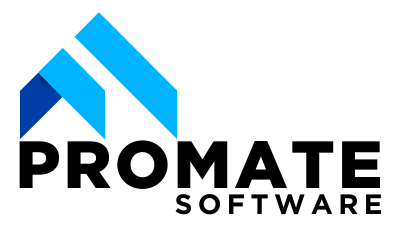You’ve started a project. You made it through all the chaos of planning and executed it. Hopefully, you avoided too many all-nighters in the monitoring phase.
Now what?
It’s time to wrap it all up with a neat bow!
Let’s break down what the Closing Phase of a project really means — and why it’s more important than most people think.
Quick FAQS before we get into it.
Frequently Asked Questions
What’s the project closing phase all about?
It’s the final step where you tie up all the loose ends and officially finish the project.
Is it really necessary?
Yep — it helps prevent confusion, keeps clients happy, and sets you up better for next time.
What do you usually do during this phase?
Think sign-offs, reports, team feedback, and saying thanks.
What if I skip it?
You might run into issues later — best to finish strong.
Can software help?
Definitely. It can make closing projects heaps easier.
What is the Closing Phase?
The Closing Phase is the final stage in the project management cycle. It’s where you officially end the project. Here you finalise all activities, hand over deliverables, release resources, and evaluate the project’s performance.
It may sound simple. But this phase carries serious weight. Done properly, it helps avoid loose ends, improves future project efficiency, and boosts your team’s credibility. Done poorly, and you risk misunderstandings, scope creep, or even damaging client relationships.
Why Bother? Isn’t the Work Already Done?
This is a question a lot of people ask. If the deliverables are out the door and the client’s happy, why go through more process?
Because closure is more than just deliverables. It’s about learning, accountability, and growth. If you’re not reflecting on what worked and what flopped, you’re bound to repeat the same mistakes. Plus, without proper closure, project-related documents, access permissions, and budgets can linger like ghosts, messing with your reporting and resource allocation.
Key Steps in the Closing Phase
So, what actually happens in the Closing Phase?
1. Final Deliverables & Client Approval
The first thing is to make sure your deliverables match the project scope. Everything agreed upon at the start — from features to documentation — needs to be handed over. This is also when you confirm the client is satisfied.
Tools like Promate are super handy here. It lets you track scope items and make sure nothing falls through the cracks. No more digging through old email threads trying to figure out if someone was meant to deliver a UX report or not.
2. Documentation & Reports
The paper trail matters. Think of this like creating a time capsule for your project — future you (or another PM) will thank you. You’ll want to finalise:
- Performance reports
- Budget reports
- Invoices
- Lessons learned
- Updated project files
With Promate’s document management system, all your files are stored, categorised, and accessible for future use. No more “Where did I save that invoice again?”
3. Administrative Closure
This one sound boring, but it’s important: close out contracts, terminate external vendor agreements, and make sure all payments are made. You’ll also want to release any project-specific software subscriptions or licences if you’ve got them.
4. Resource Release
Your team has probably been juggling other commitments while working on your project. The closing phase is when you officially release team members and let them get back to their regular workloads. Recognise their efforts while you’re at it. A simple “Well done” can go a long way.
5. Post-Mortem & Lessons Learned
Post-Mortem in a project management setting is a structured meeting held after project completion. This is arguably the most valuable part. Gather the team, get honest feedback, and document what worked and what didn’t. Promate makes this easier with performance insights and analytics that help you evaluate where time and resources were used efficiently — and where things went sideways.
No one wants to relive that one week where everything broke — but understanding why it happened can stop history repeating.
Common Closing Phase Pitfalls (and How to Avoid Them)
Alright, let’s get real. The Closing Phase doesn’t always go smoothly. Here are a few common issues and how to avoid them.
1. Rushing Through It
When a project’s dragging on, there’s a big temptation to call it quits and move on. But skipping the proper wrap-up can lead to unfinished work and unmet expectations. Use checklists and dashboards to ensure every step is properly closed out.
2. Lack of Client Confirmation
You’d be surprised how often projects are “done” without formally confirming with the client. This can lead to disputes or surprise change requests down the track. Promate’s task tracking and shared visibility features keep both you and your clients on the same page.
3. No Team Debrief
Not getting feedback from your team is a missed opportunity. Promate helps you store and organise internal notes, so your debriefs are easy to conduct and refer back to later.
Why You Need Promate for Closing Projects
Promate isn’t just for task lists and time tracking. It supports the Closing Phase by helping you:
- Track deliverables: So nothing’s missed or misunderstood
- Manage documents: Keep all your reports, invoices, and learnings in one place
- Generate performance insights: Find out what slowed you down or helped you fly
- Collaborate with clients: Ensure everyone agrees the job’s done and dusted
Its smart automation means fewer manual processes, and its intuitive dashboards help you visualise what’s left to do, right up until project closure. It’s like having a digital project assistant that doesn’t take holidays.
Wrap up: Closure Isn’t Just the End — It’s the Launchpad for the Next Big Win
The Closing Phase might feel like the final few pages of a long novel, but it’s what sets you up for your next bestseller. It gives your team clarity, your stakeholders confidence, and your future self a bit of a break.
Whether you’re managing construction projects, IT rollouts, or surveyor reports, a proper close-out phase keeps your work professional, your clients loyal, and your team focused. And with platforms like Promate, managing this final phase becomes less of a chore and more of a strategy for continuous improvement.
So next time you feel like skipping the final steps and heading out early, take a moment to finish things properly. A good wrap-up makes future projects way easier — like a smooth, cold drink on a hot day.
Check out Promate Software and see how it can make project closure a breeze: https://promatesoftware.com.au



